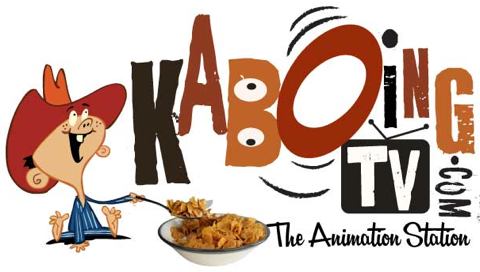Joe Murray’s Kaboing Goes Kaput

Less than a year after its launch, Kaboing TV has come to a virtual standstill. Billed as “an alternative channel for quality animation that serves both the cartoon fan and the animation community of artists and writers,” the idea was conceived by Joe Murray, the veteran creator of old-media shows like Rocko’s Modern Life and Camp Lazlo. Murray raised over $20,000 from a Kickstarter campaign in June, 2010 to launch the concept.
Kaboing failed to gain traction with viewers. In the past year, Murray unveiled three original animated shorts based on his Frog in a Suit concept, and also presented six indie animated shorts. The combined viewership of those nine films was just 57,000 views.
In an essay posted on his blog last week he described Kaboing as being “at a crossroads.” In an earlier blog post last month, he alluded to Kaboing as if it had already died, writing that it was like “watching the fuse to what promises to be a wonderful firework display, fizzle out at the moment of truth.” The Kaboing website, which hosted its videos on YouTube, hasn’t unveilved a new cartoon since September, 2011, and the last original Frog in a Suit short premiered last March.
Murray blames virtually everything as a factor in the site’s lack of success, from a failed mainstream project that he had undertaken to no marketing budget to advertisers who wanted ownership of the shorts to the Internet’s desire for crude material.
The simplest solution though is often the right one, and in this case, it would appear that Murray didn’t offer a compelling product that audiences wanted to see. The Internet is very good at identifying what it likes, and it doesn’t like the kind of traditional material produced by mainstream TV studios. Frog in a Suit felt too much like a standard-issue TV cartoon with all the timeworn elements that Internet audiences are trying to escape.
It’s commendable that Murray is being upfront about the struggles of his start-up Kaboing TV, but his assignment of blame for the site’s failure seems misplaced to me. Reading between the lines of his January 18 post, he appears to believe that his work was of a higher quality than the kind of animation that becomes successful on-line. He expresses frustration that a “unicorn shitting rainbows” is more popular than his own work. But while some material is certainly more crude and raw, there are also breakout Internet hits like Simon Tofield’s Simon’s Cat which feature more elegant animation than anything you’ll find produced by a TV animation studio. The nineteen Simon’s Cat shorts, all animated by Tofield, have garnered over 215 million views on YouTube and spawned book and merchandising deals.
In the past artists created properties to pitch and sell to TV networks or newspaper syndicates in the hope of making their characters famous. Tofield has succeeded where Murray couldn’t by showing its possible to create characters on one’s own terms, turn them into a success online without giving up ownership rights, and then wait for companies to approach you with licensing deals.
YouTube, in fact, has spawned a new generation of animation creators who have become successful individual brands without the help of any middleman. An even more successful example is Dane Boedigheimer, whose Annoying Orange videos have accumulated nearly 600 million views on YouTube. His work has become so popular that Cartoon Network recently greenlit a series based on his characters.
Here’s a list of individual filmmakers besides Tofield and Boedigheimer whose YouTube channels have garnered huge fanbases and (we may assume) some financial reward:
PES
26 videos
27.3 million video viewsLev Yilmaz
60 videos
35.1 million video viewsCyriak
50 videos
62.7 million video viewsHarry Partridge
31 videos
66.3 million video viewsEgoraptor
66 videos
84.6 million video viewsFilmCow (aka Charlie the Unicorn)
43 videos
218.3 million video views
Most tellingly, none of these artists became successful by soliciting money from a Kickstarter campaign and none of them had marketing campaigns. They created their animation because they believed in it, and audiences responded to the work. As the mechanism of distribution matures on the Internet, more and more animators will discover that this kind of success is possible.
